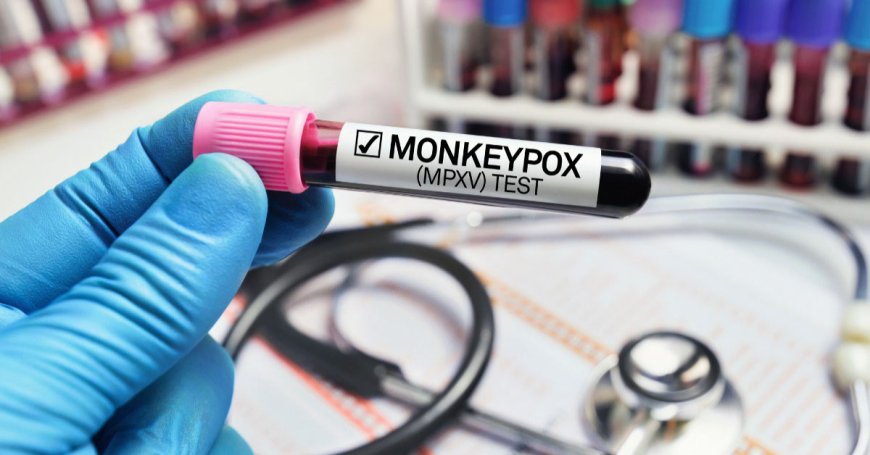Monkeypox Treatment: Understanding the Disease and Available Therapies
Monkeypox is a rare viral disease that originated in wild animals like rodents and primates found in parts of West and Central Africa.

Origins and Symptoms of Monkeypox
Monkeypox is a rare viral disease that originated in wild animals like rodents and primates found in parts of West and Central Africa. While the natural reservoir of monkeypox remains unknown, African rodents are suspected to play a role in transmission. The virus was first discovered in laboratory monkeys in 1958, hence the name monkeypox. Humans can get infected through direct contact with infected animals, humans, or materials contaminated with the virus.
Initial symptoms of monkeypox include fever, headache, muscle aches, backache, swollen lymph nodes, chills and exhaustion. Within 1 to 3 days after the appearance of fever, the patient develops a rash, often beginning on the face then spreading to other parts of the body. Lesions eventually crust over and fall off. Symptoms usually last between 2-4 weeks.
Transmission and At-Risk Groups
Monkeypox spreads through close contact with lesions, body fluids, respiratory droplets and contaminated materials of an infected person. The virus can also be transmitted from the time symptoms start until all the rash has resolved with the formation of a scab. Pregnant women, children under 8 years of age and immunocompromised persons are more susceptible to complications.
Recent outbreaks of monkeypox have been reported among men who have sex with men, but anyone can get infected through close physical contact. Sexual intimacy in the context of monkeypox outbreaks can result in higher risk of transmission, likely due to close contact of mucous membranes and lesions typical of the disease.
Available Treatments and Vaccines
There are no specific drugs licensed for the treatment of monkeypox infections but antiviral medicines used to treat similar viruses may be beneficial. Tecovirimat has been approved by the FDA for treating human smallpox and is being used under an Expanded Access Protocol for monkeypox. Tecovirimat blocks virion release at the final stages of the monkeypox virus life cycle.
Cidofovir injection is also being evaluated for the treatment of disseminated monkeypox infections. Cidofovir has in-vitro activity against the orthopoxviruses and has been used to treat vaccinia infections in immunosuppressed individuals. Brincidofovir, an oral lipid conjugate of cidofovir, shows improved safety and bioavailability.
Vaccines developed for smallpox have proven effective in preventing monkeypox. The two currently available smallpox vaccines are JYNNEOS and ACAM2000. JYNNEOS or Imvamune is a non-replicating vaccinia virus vaccine approved by the FDA for prevention of both smallpox and monkeypox. It has fewer side effects than older smallpox vaccines.
Economic Impacts of Outbreaks
Widespread monkeypox outbreaks are likely to have negative economic consequences due to costs incurred towards disease control, disruptions to trade and travel. Containment measures taken to slow transmission like quarantines and contact tracing require substantial investments from public health agencies. There may also be costs related to vaccine procurement and distribution during outbreak responses.
Larger outbreaks can affect consumer spending patterns and business operations due to fears of contagion. Travel and tourism are major sectors that often take an early hit, with cancellations of hotel bookings and flight reservations. Disruption of global supply chains were challenges faced during the COVID-19 pandemic. Recurring zoonotic spillovers remind us of the interconnectedness between human, animal and environmental health. Concerted global efforts are crucial to strengthen disease surveillance and control in the post-pandemic era.
Research Focus and Knowledge Gaps
Monkeypox epidemiology research seeks to better understand routes of animal to human transmission and identify associated risk factors. Knowledge of the virus' genetic diversity and evolution may provide clues on emergence events. Further characterization of outbreak strains can aid in tracing transmission chains. Clinical studies comparing treatment outcomes of antiviral agents are also priorities.
Knowledge gaps include the natural reservoir species, underlying reasons for outbreaks in new geographic regions, extent of asymptomatic infections and precise modes of sexual transmission. Large epidemiological cohorts and virological sampling are needed. Continued vigilance, accelerated research and international collaboration are essential to close existing gaps and enable timely responses to future disease threats at the human-animal interface.
In summary, recent monkeypox outbreaks underscore the need to strengthen global surveillance of zoonotic infections. Currently available smallpox vaccines and antiviral therapies provide options for outbreak control if administered according to guidance. Ongoing epidemiological and virological investigations aim to expand our understanding of monkeypox disease dynamics. Coordinated multi-sectoral action will be important to mitigate wider health and socioeconomic impacts.
Get more Insights Monkeypox Treatment
Unlock More Insights—Explore the Report in the Language You Prefer
About Author:
Ravina Pandya, Content Writer, has a strong foothold in the market research industry. She specializes in writing well-researched articles from different industries, including food and beverages, information and technology, healthcare, chemical and materials, etc.












